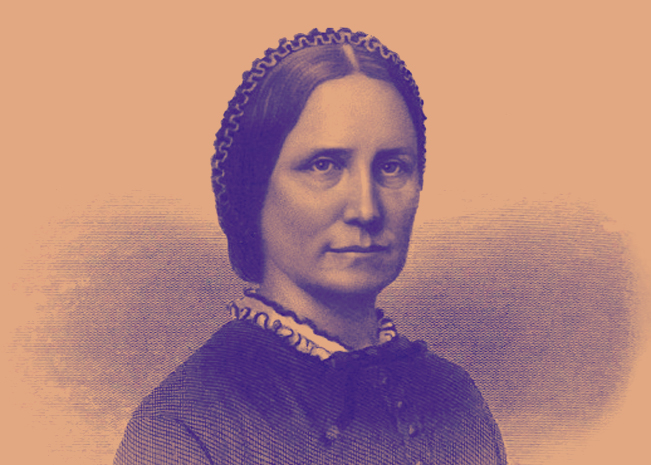Last week we explored the impressive career of orator and abolitionist Anna Dickinson, who defiantly waded into the male-dominated eddies of party politics. Today we’re taking a look at Mary Livermore, who fulfilled her own ambitions by a more traditional—but no less noteworthy—path.
Mary Livermore—born Mary Ashton Rice in Boston—had long been in the business of public advocacy. She trained to be a teacher, and her time as a private tutor on a Virginia plantation exposed her to the horrors of slavery. She then became active in the temperance movement, serving as the editor of a temperance newspaper for children and writing articles on abolition, temperance, and women’s rights. After she married and moved to Chicago, Livermore continued her work as editor of her husband’s religious journal, The New Covenant in the decade before the Civil War.
These experiences positioned her to take a lead role in organizing the Chicago branch of the United States Sanitary Commission.

Henry Bellows, a New York minister, established the United States Sanitary Commission in 1861 in an effort to supplement the U.S. Army’s meager provisions for the health and wellness of its soldiers. The national organization dispatched physicians and other inspectors to the armies to survey the quality of hospitals and their needs. At home, agents of the Commission raised money and medical supplies to ship to the front. The chief fundraising tools were the “sanitary fairs” conducted primarily in 1863 and 1864 in major American cities. Eventually, the USSC stood up its own hospitals, aid stations, and canteens for traveling soldiers.
Mary Livermore served the Chicago branch of the USSC, later known as the Northwestern Sanitary Commission. She organized local branches all over the upper Midwest in 1861, then in early 1862 set off on a tour of Army hospitals along the Mississippi River valley down to St. Louis. There she witnessed a critical lack of medical supplies and sanitary conditions, and returned to Chicago to organize relief and write the reports that would spur the War Department to action. In a later tour to the Army around Vicksburg in 1863, Mary Livermore discerned an impending scurvy epidemic and successfully mobilized the onions and potatoes of the upper Midwest in a major relief effort.
Livermore’s best-known triumph came in the summer of 1863 with the Northwest Sanitary Fair in Chicago. She, along with her co-director Jane Hoge, organized the event which successfully raised over $100,000 for the aid and comfort of the troops.

In contrast to Dickinson, the work of the women in the sanitary commission was conscientiously non-partisan. The Sanitary Commission movement condemned party politics in favor of sacrifice for the nation-state. In that way, Livermore reasoned, a wider swathe of citizens–men and women–would respond to the national crisis. “The great uprising among men,” she wrote, “who ignored party and politics…in the fervor of their quickened love of country, was parallel by a similar uprising among women.” This conscientious service and community oriented patriotism also drew on the Nineteenth Century characterization of women’s particularly maternal virtues.
The difference between Livermore and Dickinson can be seen in their respective interviews with Abraham Lincoln. While Dickinson needled the President, and aimed to make him uncomfortable, Livermore appreciated the Illinoisan’s homely affectations and his national leadership… and told him so to his face.
Yet, even for the more traditional Livermore, the status of women in power rose during the war. She noted that her techniques produced results for the soldiers, stating that “women could do anything they desired with army officers.” Dickinson moved the politicians, and Livermore moved the army in a two-pronged assault on the rebellion.
If the wartime efforts didn’t lead directly to political power for women, they did enhance their political influence. After Appomattox, both Livermore and Dickinson moved quickly to advocate for women’s rights in the political world. It would not be easy, but both women lived long enough into the Twentieth Century to see positive results of the new battle.
